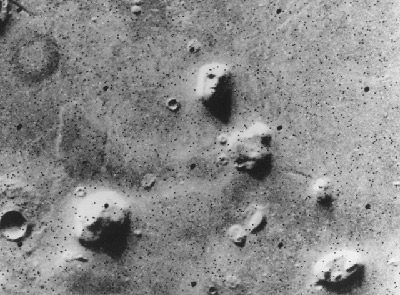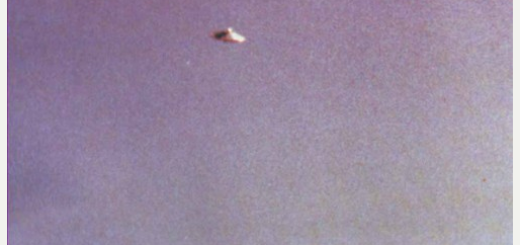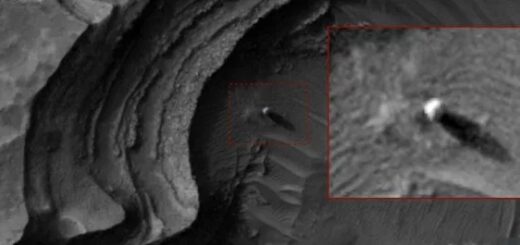Is there really a face on Mars?

We earthlings have always been fascinated with the idea of finding life on other planets, and we’ve been captivated particularly with the possibility that life exists on one of our closest celestial neighbors — Mars. Books, television shows and movies have all arrived at their own interpretations of what Martians might look like, from H.G. Wells’ tentacled, squidlike aliens in “The War of the Worlds,” to Looney Tunes’ Roman helmet- and skirt-wearing Marvin the Martian. In response to all of this postulating about life on Mars, scientists would explain that the atmosphere on the red planet couldn’t support life as we know it.
Then in 1976, NASA’s Viking 1 spacecraft was scouting out a potential Mars landing site for its sister spacecraft, Viking 2, when it came across something unexpected. While the craft was snapping pictures of a region of the planet called Cydonia, Viking 1 captured what looked like an enormous human face staring up at it. The “face” measured nearly two miles across and had what looked like deep-set eyes and a clearly delineated nose and mouth.
The tabloids, television shows and movie studios were quick to jump on the image, calling it real evidence of life on Mars. Writer and conspiracy theorist Richard Hoagland was one of the biggest proponents of the face on Mars idea. He claimed the face was an artifact of an ancient alien city, built by an intelligent Martian race.
Despite the apparent clarity of the face, NASA was quick to explain away the image as nothing more than an optical illusion. Shadows caused by the angle of the sun were merely creating the illusion of eyes, a nose and mouth across a natural formation, according to scientists.
True believers were equally quick to fire back: NASA was trying to cover up the evidence of life on Mars. It was a conspiracy. Find out the truth behind the face on the next page.
Though scientists didn’t believe the image captured of Mars back in the 1970s showed a real face, they did want to get a better look at it. Once photographic imaging techniques had improved, they went in for a closer shot. In April 1998, the Mars Orbiter captured a picture 10 times sharper than the original photos. In these more detailed pictures, what had appeared to be eyes, nose and a mouth vanished into nothing more than what scientists had originally surmised — a natural rock formation.
However, those who were convinced that this was a real image of a face were not appeased. Richard Hoagland claimed the image had been intentionally enhanced so much that the face disintegrated. So in 2001, the Mars Surveyor returned to take even higher resolution photos. By shooting the formation from different angles, it was able to put together a 3-D image. When NASA scientists analyzed the structure’s height and dimensions, they found that it actually resembled a rock formation here on Earth — the flat-topped mesa commonly found throughout the Southwest.
Though the photographs seemed to negate the idea of a face on Mars, they were nonetheless fascin



 Creators of mankind
Creators of mankind Description of “Tall white aliens”
Description of “Tall white aliens” Where they came from?
Where they came from? About hostile civilizations
About hostile civilizations The war for the Earth
The war for the Earth “Tall white aliens” about eternal life
“Tall white aliens” about eternal life Video: “Nordic aliens”
Video: “Nordic aliens” Aliens
Aliens Alien encounters
Alien encounters The aliens base
The aliens base UFO
UFO Technology UFO
Technology UFO Underground civilization
Underground civilization Ancient alien artifacts
Ancient alien artifacts Military and UFO
Military and UFO Mysteries and hypotheses
Mysteries and hypotheses Scientific facts
Scientific facts


















